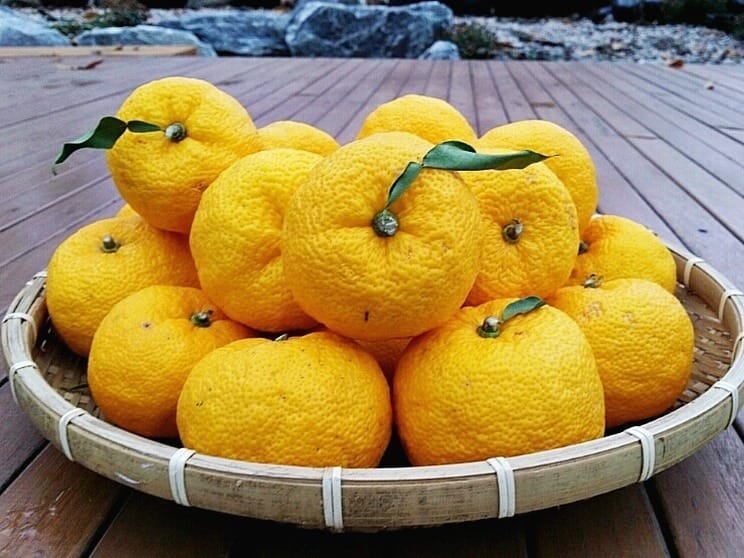Yuzu Fruit: Ultimate Guide to Japanese Citrus Uses in Cooking and Cuisine
Discover yuzu, East Asia's prized citrus treasure. With its complex blend of mandarin, grapefruit, and floral notes, this aromatic fruit transforms everything from Japanese ponzu sauce to gourmet desserts and craft cocktails worldwide.

In the diverse world of citrus, few fruits capture the imagination of chefs and food enthusiasts quite like yuzu.
This small, yellow-golden fruit native to East Asia has transcended its regional origins to become a global culinary sensation, prized for its complex aroma and distinctive flavor profile that defies simple categorization.
What makes this Yuzu citrus so special, and why has it become such a coveted ingredient in both traditional and contemporary cuisines?
The Enigmatic Citrus: What Exactly Is Yuzu?
Yuzu (Citrus junos) originated in central China and Tibet before making its way to Japan and Korea centuries ago, where it became deeply integrated into the local food cultures.
Visually, yuzu resembles a small grapefruit with an uneven skin, typically ranging from green when unripe to a vibrant yellow-orange when fully mature. But it's what lies beneath the appearance that makes yuzu truly extraordinary.
Unlike common citrus fruits that might be characterized by a single dominant note, yuzu offers a symphony of aromas and flavors.
The fragrance can be described as a complex blend of mandarin orange, grapefruit, and lime, with subtle floral undertones that evoke comparisons to bergamot.
This multi-dimensional quality makes yuzu immediately recognizable yet impossible to fully replicate with any combination of more familiar citrus fruits.
The Japanese have a saying: "Ichi ka bachi ka," meaning "all or nothing." This phrase perfectly captures the essence of yuzu's appeal—it's an all-or-nothing experience that refuses to be diluted or substituted.
A Seasonal Treasure
Part of yuzu's mystique stems from its seasonality. In Japan, the fruit reaches its peak during the winter months, particularly around the winter solstice.
This timing has given rise to the traditional Japanese practice of yuzu-yu, where whole yuzu fruits are floated in hot baths during the winter solstice.
The Japanese believe this ritual purifies the body, improves circulation, and wards off winter colds. This seasonal association enhances yuzu's cultural significance beyond mere culinary applications.
Culinary Versatility: From Traditional to Avant-Garde
What truly sets yuzu apart is its remarkable versatility in the kitchen. Unlike lemons or limes, which are often relegated to secondary roles as accents or garnishes, yuzu frequently takes center stage in numerous preparations:
Condiments and Seasonings
Perhaps the most famous yuzu-based condiment is yuzu kosho, a fermented paste made from yuzu zest, chili peppers, and salt.
This pungent, aromatic paste adds depth and complexity to soups, grilled meats, and vegetables.
In Japanese cuisine, it's particularly popular with nabemono (hot pot dishes) and yakitori (grilled chicken skewers).
During winter months, Japanese chefs prepare a seasonal delicacy called buri daikon, where fatty yellowtail (buri) is simmered with daikon radish and finished with a bright yuzu garnish, creating a perfect harmony between the rich fish and citrus brightness that celebrates Japan's winter bounty.
Ponzu sauce, another staple of Japanese cooking, combines yuzu juice with soy sauce, mirin, and dashi to create a tangy, umami-rich dressing perfect for tataki (seared meat or fish), shabu-shabu, and gyoza.
The yuzu's bright acidity cuts through richness, creating balanced, complex flavors that simple lemon or lime juice cannot achieve.
Desserts and Patisserie
Western pastry chefs have embraced yuzu for its ability to add sophistication to desserts.
Its complex flavor profile pairs beautifully with white chocolate, vanilla, and tropical fruits. Yuzu curd tarts, yuzu-infused mousses, and yuzu sorbet have become fixtures in high-end patisseries worldwide.
The fruit's natural affinity for dairy makes it particularly successful in cheesecakes, panna cotta, and ice creams, where its flavor unfolds gradually with each spoonful.
Beverages and Mixology

In the world of beverages, yuzu has revolutionized both alcoholic and non-alcoholic drinks.
Yuzu-infused sakes and liqueurs capture the fruit's ethereal quality, while yuzu cocktails have become staples in crafted mixology.
Even simple yuzu-infused water or tea offers a refreshing complexity that standard citrus cannot match. The fruit's intense aromatics mean that even a small amount can transform an ordinary drink into something memorably aromatic.
Preservation Techniques
Traditionally, every part of the yuzu is utilized. The zest is dried or preserved in salt, the juice is bottled or frozen in ice cube trays, and even the seeds are sometimes used in specialized culinary applications.
In Korean cuisine, yuzu is preserved as yuja-cheong, a marmalade-like concoction where the whole fruit is thinly sliced and preserved in honey or sugar.
This preservation is then diluted with hot water to make a soothing tea called yuja-cha, particularly popular during cold winter months.
The Science Behind the Magic
What makes yuzu so distinctive from a chemical perspective? Research has identified over 20 aromatic compounds in yuzu, significantly more than found in common lemons or limes.
These compounds include limonene, γ-terpinene, and β-pinene, which together create yuzu's signature scent profile. Additionally, yuzu contains high levels of hesperidin, a flavonoid with potential anti-inflammatory and antioxidant properties.
The fruit's oil glands are concentrated near the surface of the skin, releasing their aromatic compounds at the slightest touch or abrasion.
This makes yuzu ideal for applications where aroma is paramount, such as in delicate broths, infused oils, or as a finishing touch to completed dishes.
Culinary Diplomacy: Yuzu's Global Journey
Over the past two decades, yuzu has transcended its East Asian origins to become a global culinary phenomenon.
This journey began with high-end Japanese restaurants introducing Western diners to yuzu's unique properties, but quickly expanded as chefs recognized its potential to elevate diverse cuisines.
Today, Scandinavian chefs pair yuzu with their local seafood, French patissiers incorporate it into classic desserts, and American bartenders craft signature yuzu cocktails.
This cross-cultural adoption speaks to yuzu's universal appeal and adaptability across culinary traditions.
Challenges and Conservation
Despite its growing popularity, yuzu remains relatively rare outside East Asia. The yuzu trees are notoriously difficult to cultivate, requiring specific climate conditions and up to ten years before bearing significant fruit.
Additionally, fresh yuzu has strict import restrictions in many countries due to agricultural protection policies.
These limitations have sparked conservation efforts and local cultivation initiatives in California, Australia, and parts of southern Europe, where microclimate conditions might support yuzu orchards.
Meanwhile, chefs and home cooks outside yuzu-growing regions often rely on bottled juice, freeze-dried powder, or yuzu extract—shadows of the fresh fruit but still carrying much of its distinctive character.
Conclusion: The Ineffable Appeal of Yuzu
What makes yuzu truly special extends beyond its flavor and aroma—it's the fruit's ability to transform dishes in ways that are subtle yet profound.
A few drops of yuzu juice can elevate a simple dish to memorable heights, adding brightness without overwhelming other flavors.
Its complex character means it pairs well with everything from delicate seafood to robust meats, from creamy desserts to astringent vegetables.
In a culinary world where novelty is often fleeting, yuzu has earned its place as a timeless ingredient—one that continues to inspire chefs and delight diners with its singular, irreplaceable character.
As global cuisine continues to evolve, yuzu stands as a testament to how a single ingredient can bridge traditions, inspire innovation, and create moments of genuine culinary magic.


